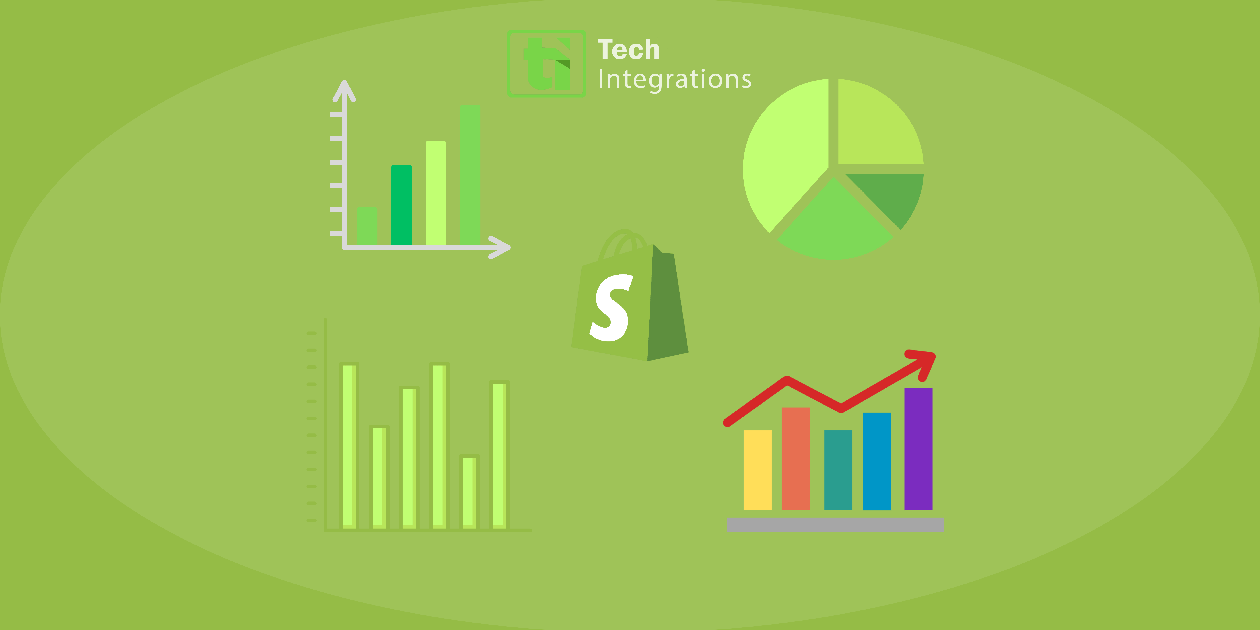Shopify Analytics is a powerful tool that provides merchants with comprehensive insights into their online store’s performance. Running a successful online store requires more than fair having incredible products; it moreover demands a profound understanding of your business performance. Shopify, one of the driving e-commerce platforms, offers a comprehensive analytics suite that permits store owners to monitor their business’s health. However, with a wealth of information at your fingertips, it’s vital to center on the key metrics that really affect your bottom line. This article digs into the basic Shopify analytics metrics each store owner ought to track to optimize their business operations and increase profitability.
1. Total Sales
Total Sales is maybe the most clear however crucial metric. It represents the total revenue generated by your store over a specific period. This figure incorporates all successful orders, including taxes and shipping fees. By frequently checking your total sales, you can evaluate the overall performance of your store. An upward trend in total sales generally indicates that your business strategies are working, while a decline might signal the need for a change in approach.
Beyond fair following add up to deals, it’s imperative to analyze this metric in connection to other information focuses. For case, breaking down add-up to deals by channel (online store, social media, or other deals channels) can give bits of knowledge into where your clients are most dynamic. Moreover, analyzing add up to deals amid particular campaigns or advancements makes a difference assess their effectiveness.
2. Conversion Rate
The conversion rate is a basic metric that measures the percentage of visitor who make a purchase. A high conversion rate indicates that your website is effectively persuading visitors to buy, while a low conversion rate suggests there may be barriers preventing visitors from completing a purchase.
Several factors can impact your conversion rate, including website design, product descriptions, pricing, and the checkout process. Shopify allows you to track your conversion rate over time and by different segments, such as by devices or activity sources. By analyzing these segments, you can identify areas for improvement and implement targeted strategies to enhance your conversion rate.
For instance, if your mobile conversion rate is significantly lower than your desktop rate, you might be required to optimize your website for mobile clients. A/B testing different elements of your location, like call-to-action buttons or product pictures, can also offer assistance in fine-tuning your store to increase conversions.
3. Normal Order Value(AOV)
Normal Order Value (AOV) is the average sum that goes through by the customer per exchange. This metric is vital since expanding your AOV can essentially boost your income without essentially expanding your activity or conversion rate. Shopify gives a point-by-point breakdown of your AOV, permitting you to track it over time and get it obtaining patterns.
To improve your AOV, consider implementing strategies like upselling, cross-selling, and advertising bundles or discounts on higher amounts. For example, recommending related products amid checkout or advertising free shipping on orders over a certain limit can empower customers to spend more. Checking changes in AOV after introducing such strategies can help determine their effectiveness.
4. Customer Lifetime Value (CLV)
Customer Lifetime Value (CLV) gauges the add-up to income you can anticipate from a single client over the course of their relationship with your business. This metric is basic for understanding the long-term value of your customers and makes a difference in making educated choices about marketing spend and customer retention strategies.
A higher CLV means that customers are making repeat buys, which is a sign of strong customer loyalty. Shopify’s analytics can track the history of your customers, giving bits of knowledge into their buying behavior and making a difference you distinguishing high-value customers.
To increase CLV, focus on building lasting relationships with your customers. Implement loyalty programs, personalize marketing efforts, and provide exceptional customer service. Additionally, consider using email marketing to re-engage past customers and encourage repeat purchases. By regularly reviewing your CLV, you can assess the impact of these strategies and make adjustments as needed
5. Customer Acquisition Cost (CAC)
Customer Acquisition Cost (CAC) is the average sum of cash you spend to obtain a acquire customers. It includes all marketing and advertising expenses, such as paid ads, content marketing, and social media campaigns. Understanding your CAC is crucial for assessing the benefit of your promoting efforts.
A high CAC might show that your showcasing techniques are not cost-effective, whereas a moo CAC recommends that you are proficiently procuring clients. Shopify’s integration with different showcasing devices permits you to calculate CAC by following all related costs and comparing them with the number of unused clients acquired.
To lower your CAC, center on optimizing your showcasing campaigns. This may include focusing on more particular groups of onlookers, moving forward advertisement duplicate, or testing distinctive showcasing channels. Furthermore, upgrading your natural reach through SEO and substance promoting can offer assistance to diminish dependence on paid promoting, subsequently bringing down your CAC.
6. Traffic Sources
Understanding where your traffic comes from is key to creating a successful marketing strategy. Shopify’s analytics dashboard breaks down your traffic sources into categories such as direct traffic, organic search, paid search, social media, and referral traffic. Each of these channels can tell you something different about how clients are finding your store.
For example, a high percentage of traffic from social media might indicate that your social campaigns are effective, while a significant amount of organic search traffic suggests that your SEO efforts are paying off. Conversely, if a particular traffic source is underperforming, you might need to adjust your strategy or allocate resources elsewhere.
Tracking activity sources over time permits you to see which channels are developing and which are declining, making a difference for you to refine your showcasing approach. Besides, analyzing activity sources in conjunction with change rates can give more profound experiences into the quality of activity each channel brings to your site.
7. Cart Abandonment Rate
Cart abandonment rate is the rate of customers who include things in their cart but do not total the buy. A tall cart surrender rate can altogether affect your deals, making it a basic metric to monitor.
Common reasons for cart surrender incorporate unforeseen shipping costs, a complicated checkout preparation, and concerns approximately installment security. Shopify’s analytics not as it were tracks your cart surrender rate but also permits you to set up robotized surrendered cart emails to remind clients to total their purchases.
To decrease cart surrender, guarantee your checkout preparation is as straightforward and straightforward as conceivable. Show shipping costs forthrightly, offer different installment alternatives, and give visitor checkout to streamline the handle. Observing the effect of these changes on your cart deserting rate will offer assistance to you in fine-tuning your approach and progress conversions.
8. Repeat Customer Rate
The repeat customer rate is the percentage of customers who have made more than one purchase from your store. This metric is a solid indicator of customer satisfaction and loyalty. A high repeat customer rate recommends that your products and customers benefit are assembly or exceeding customer expectations.
Shopify tracks this metric over time, allowing you to see patterns in customer retention. By identifying patterns in repeat purchases, you can tailor your promoting endeavors to energize more visit buying. Strategies to increase repeat customer rates include loyalty programs, personalized marketing, and post-purchase follow-ups.
Additionally, analyzing the repeat customer rate alongside CLV and CAC can give you a clearer picture of your store’s profitability. Loyal customers typically have a higher CLV and a lower CAC, making them incredibly valuable to your business.
9. Product Performance
Product performance metrics provide insights into which products are offering well and which are underperforming. Shopify’s analytics offers point-by-point reports on product deals, including units sold, total revenue per item, and profit margins.
By regularly reviewing product performance, you can make informed decisions about inventory management, pricing strategies, and marketing focus. For example, if a particular product is consistently underperforming, you might consider discontinuing it or offering discounts to clear inventory. Conversely, if a product is selling exceptionally well, you might want to increase stock levels or feature it prominently in your marketing campaigns.
Understanding product performance also helps in identifying trends and customer preferences, enabling you to adjust your product offerings to better meet market demand.
10. Refund and Return Rates
Refund and return rates are important metrics that can impact your profitability and customer satisfaction. A high refund or return rate may indicate issues with product quality, inaccurate descriptions, or unmet customer expectations.
Shopify allows you to track these rates, providing insights into the reasons behind returns and refunds. By analyzing this data, you can identify common issues and take steps to address them. For instance, improving product descriptions, offering detailed sizing guides, or enhancing product quality can help reduce return rates.
Monitoring refund and return rates is also essential for maintaining healthy profit margins. Frequent returns can erode your profits, so it’s important to take proactive measures to minimize them.
Conclusion
Shopify’s analytics tools provide a wealth of data that can help you understand and optimize your e-commerce business. By focusing on key metrics such as total sales, conversion rate, AOV, CLV, CAC, traffic sources, cart abandonment rate, repeat customer rate, product performance, and refund and return rates, you can gain valuable insights into your store’s performance and make informed decisions to drive growth.
Regularly reviewing these metrics and making data-driven adjustments to your strategies will not only improve your store’s efficiency but also enhance customer satisfaction and ultimately boost your bottom line. In the ever-competitive world of e-commerce, leveraging Shopify analytics effectively can be the difference between just surviving and truly thriving.
Unlock success with our tailored services! Elevate your business today.








